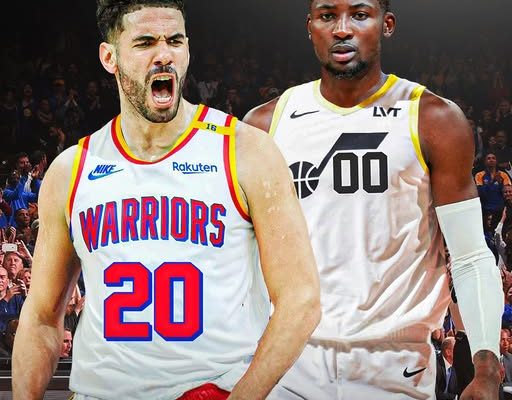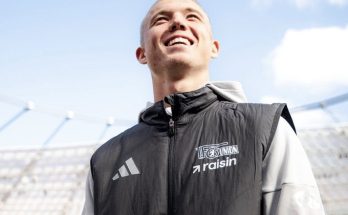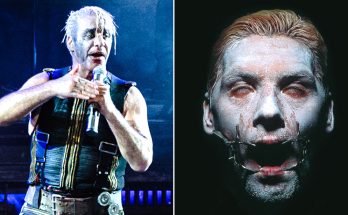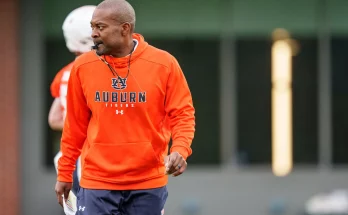Warriors Reportedly Eye Blockbuster Sign-and-Trade Involving Jonathan Kuminga and Georges Niang as Focus Shifts to Immediate Title Hopes and Strategic Long-Term Flexibility
The Golden State Warriors, long praised for their dynastic run and methodical roster decisions, may be on the verge of their next bold maneuver. According to sources around the league, Golden State is reportedly exploring a sign-and-trade deal that would send former lottery pick Jonathan Kuminga to the Utah Jazz in exchange for veteran sharpshooter Georges Niang and two unprotected first-round picks. If finalized, the move would mark a dramatic shift in the Warriors’ strategy, signaling a commitment to win-now assets while subtly arming themselves for future flexibility.
The proposed deal carries weight far beyond the names involved. For Golden State, it’s a line in the sand. It’s a statement that the organization is finished waiting for potential to develop and instead is pivoting toward certainty and fit. In a league that moves fast—and a championship window that’s steadily narrowing around the aging core of Stephen Curry and Draymond Green—this deal represents a calculated rebalancing of priorities.
Kuminga, brimming with upside and physical gifts, was once viewed as a potential cornerstone for the post-Curry era. But his time in the Bay has been marked by inconsistency, flashes of brilliance, and a persistent question: Can the Warriors afford to wait for him to become the player they believe he can be? Under a different timeline, Kuminga may well flourish into an All-Star. But the Warriors aren’t living in a “someday” mindset. They’re navigating a rapidly closing championship window and need contributors who can deliver immediately—within a system predicated on IQ, spacing, and execution.
Georges Niang, a career 40-percent three-point shooter and one of the league’s most respected floor-spacers, fits that model. He doesn’t need the ball in his hands to be effective. He stretches defenses, knows his role, and brings a tough, veteran presence that aligns well with the Warriors’ championship culture. While he may not be flashy, Niang is the kind of player who elevates the play of stars by doing the little things—spotting up, setting hard screens, and staying within his game. He’s not being brought in to carry a scoring load but to complement the gravitational pull of Stephen Curry and the playmaking of Draymond Green.
Even more intriguing than Niang’s fit is what the proposed trade brings in future capital. The two unprotected first-round picks from Utah could prove invaluable. Whether used as part of a future trade package or kept to facilitate a rebuild once the Curry era ends, they offer something the Warriors have lacked in recent years—flexibility. After years of operating with a top-heavy payroll and sacrificing draft capital for win-now moves, these picks inject the kind of optionality that modern front offices crave. They provide a cushion against uncertainty and serve as potential chips in the ever-turning wheel of superstar movement.
The rumored trade also reflects a shift in the philosophical tug-of-war that has defined the Warriors’ last few seasons. For years, the organization tried to thread the needle—developing a young core of Kuminga, Moses Moody, and formerly James Wiseman, while also competing for titles with their championship trio. But the approach yielded mixed results. Kuminga has shown signs of becoming a dynamic two-way player, but his development has been inconsistent, often clashing with the urgency required by a contending team.
That tension—between nurturing talent and demanding results—has defined Kuminga’s time with the franchise. In Utah, he might finally get the consistent minutes and offensive freedom to thrive. For Golden State, the move would clarify priorities. It’s not about what might be down the road—it’s about what gives them the best chance to win right now.
And winning right now still centers around Stephen Curry. Even at 37, Curry remains one of the most dangerous offensive players in basketball. His ability to warp defenses, create chaos off the ball, and knock down impossible shots remains unmatched. But he can’t do it alone. Draymond Green, the emotional and defensive anchor of the team, has seen his own decline in durability. Klay Thompson is gone. Jimmy Butler was a welcome addition last season, but his age and mileage come with risk. The margin for error is shrinking.
Adding a plug-and-play piece like Niang ensures spacing for Curry to operate. It ensures that Draymond has shooters around him to punish sagging defenses. It gives the Warriors more playable lineups when teams go small or switch-heavy. And it gives head coach Steve Kerr another reliable veteran who understands roles and thrives in structured systems.
On the flip side, moving off Kuminga also means letting go of a homegrown talent who had become a symbol of the future. It’s an acknowledgment that development timelines don’t always align with championship expectations. It’s a decision that will be scrutinized heavily if Kuminga blossoms into a star in Utah. But the Warriors’ front office appears ready to make peace with that possibility. Because for Golden State, this isn’t about 2028 or 2029. This is about 2025 and maximizing every last ounce of greatness left in their all-time leading scorer.
This reported move also reflects a growing sense of realism in the organization. The Warriors are no longer the unbeatable juggernaut of 2017. They’re a proud, aging contender in a deep Western Conference that includes young, athletic, and ascendant teams like Oklahoma City, Minnesota, and Dallas. Staying relevant requires not just loyalty to past success but adaptability and courage to evolve.
With this trade, Golden State would effectively be saying: the dual-timeline experiment is over. We’re picking our lane. We’re choosing experience over potential, fit over ceiling, clarity over indecision. And in doing so, they’re crafting a roadmap that honors the remainder of Curry’s prime without surrendering their ability to reset once the era ends.
As for the fans, reactions are bound to be mixed. Kuminga has his supporters—fans who believe in his upside and wanted to see him fully unleashed in a Warriors jersey. But there is also a growing chorus who understand the harsh realities of title contention: timelines matter. Fit matters. And sometimes, tough calls are necessary to stay competitive. Niang may not sell jerseys or fill highlight reels, but he could end up hitting massive playoff shots next spring.
In the end, this reported deal is less about the names and more about the message. Golden State, if they pull the trigger, is making clear that they’re not coasting into irrelevance. They’re making moves with intention—balancing the short-term need to compete with the long-term need to remain agile. It’s a chess move, not a checkers one. A bridge between eras, built on smart shooting and strategic planning.
Whether or not the deal gets finalized, it tells us where the Warriors’ mindset is. They’re done waiting for “what could be.” They’re focusing on “what works now.” And in a league that punishes hesitation and rewards clarity, that kind of decisive thinking might be exactly what keeps the dynasty alive just a little longer.



